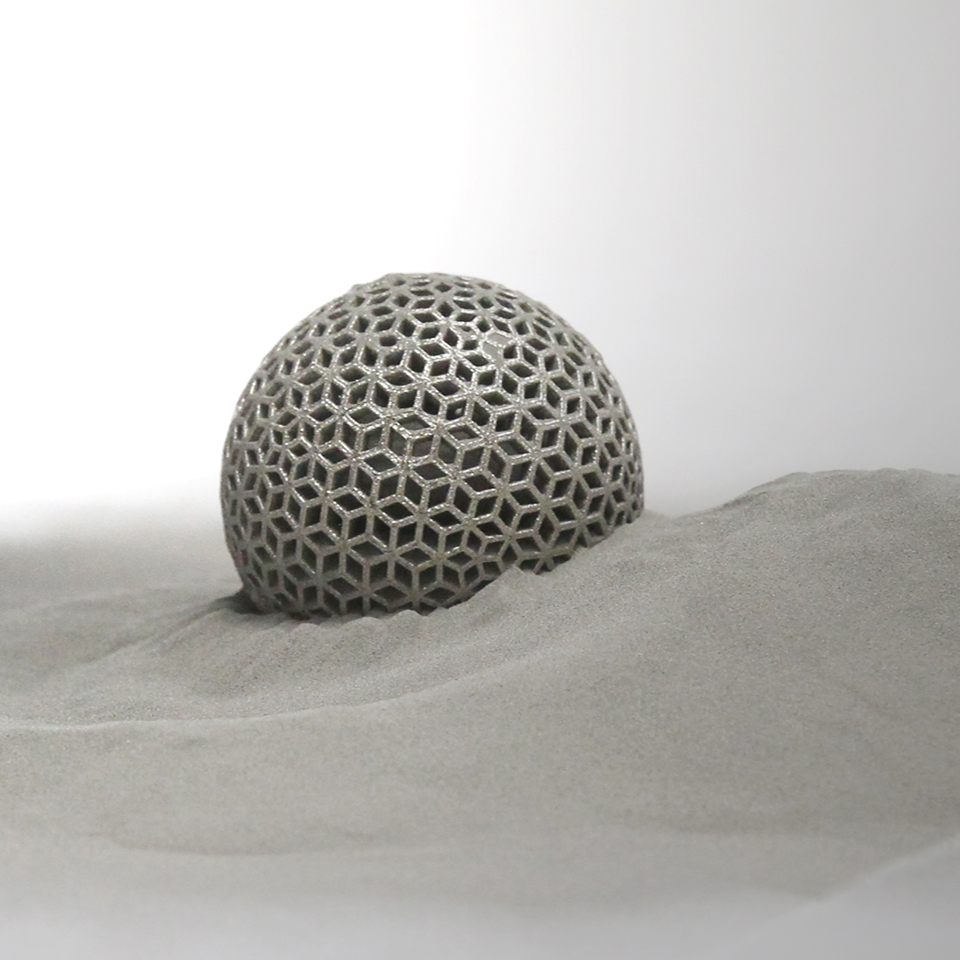
SLM 3D Printing service
SLM - Metal 3D printing is capable of producing high-quality and production-ready metal parts.
Maximum size:
500x280x365mm
Lead time:
10-15 days
METAL 3D PRINTING
Process
SLM (Selective Laser Melting) is a 3D printing technology using a metal as the working material (metal 3d printing). Each layer is first powdered onto the solid layer below. The metal powder is then melted locally using laser radiation and after solidification forms a solid material layer on which the next powder layer can then be applied. The layer thickness is generally between 15 and 500 µm. The melting temperature can be achieved with a laser power between 100 and 5000 W. To prevent oxidation of the metal powder, the process takes place in an airtight room filled with an inert atmosphere of, for example, argon or nitrogen. The finished part can be used immediately after cooling and cleaning, or it can be further processed. The maximum size of the manufactured parts ("build envelope") is usually between 125 x 125 x 75 mm and 500 x 280 x 825 mm, depending on the printer model.
Materials
Materials considered for metal-3D printing, including SLM, are generally metals pulverized by spraying without binder. Examples are
Pulverized ceramics are also suitable for 3D printing with SLM. Materials can be certified for specific machines and applications. Powder particle size is chosen depending on the desired quality.
Aluminum and aluminum alloys (Al-based alloys)
Titanium and titanium alloys (Ti-based alloys)
Cr-Co-Mo alloys
cobalt alloys (Co-based alloys)
Bronze
Ni-based alloys.
Iron alloys such as several types of stainless steel
The wide selection of materials for 3D metal printing allows for a wide range of applications, from chemical and mechanical engineering to aerospace, implantology and prosthetic construction.
Properties of printed parts
Components produced by SLM are distinguished by a relatively high relative material density of up to 99.98%, which means that chemical, electromagnetic, as well as mechanical properties of the components printed with SLM are almost the same as those of the material itself.
Larger or smaller microstructural defects can be formed due to sub-optimally selected laser power and/or speed of the process. A commonly occurring defect is pore formation and inhomogeneities due to convection currents and uneven cooling of the molten metal. These defects can be minimized by optimally selecting the laser power and process speed, however, even smallest defects and inhomogeneities must be considered in some applications.
Objects with selective, locally varying density can also be printed, adjusting the density locally after, for example, bionic principals or to achieve locally selective elasticity in lightweight components in aerospace or implantology (see Fig. 2). The density can be selectively reduced by making the printed structures porous or by creating larger cavities in the workpiece.
Special aspects of SLM versus conventional repair techniques
Like all 3D printing processes, metal-3D-printing, or SLM, has the systematic advantage of production costs that do not depend directly on the geometric complexity of the design, because producing a 3D object is "simplified" to producing multiple 2D layers. The creation and use of tools is also elided; 3D printing is essentially tool-less.
Because metal components are conventionally produced with casting or milling, we will compare bottom SLM primarily with these techniques.
Thanks to the high relative density of components printed with SLM, their mechanical properties are comparable to those of components produced with a casting process. By eliminating the molds and tools required for casting, SLM reduces repair time and time to market. SLM also offers higher geometry freedom versus casting and milling. The geometry freedom enables the production of complex shaped components, which can only be produced with casting processes or milling with great difficulty or not at all.
The above described possibility of selective density does not exist in conventional techniques. Selective density offers very much scope for the topological optimization and for creativity when designing components, this certainly plays a role in light construction, in aerospace and in implantology/bionics.
Casting is tied to molds, whose production costs must be passed on to the final product price. This often only makes economic sense from larger series onwards. With SLM, this economic constraint does not exist, making SLM particularly suitable for producing prototypes and unicats of metal components.
The more complex the part the more remarkable the advantages of SLM over casting and milling become. SLM allows integration of multiple parts and functions into a single part. Internal structures and subcomponents can be added without additional production costs. For example, channels and valves for working fluids can be integrated with SLM, or complexly shaped openings for connections and hinges, or instruments and sensors can be monolithically grown into the component as subcomponents.
Gagat Studio offers metal-3D printing services. We produce on an SLM Solutions machine with a build envelope of 500 x 280 x 365mm. Upload your model or contact us for more information and advice. We are based in Amersfoort, the Netherlands and are happy to assist with your company's metal-3D printing projects throughout the Netherlands, Belgium or Luxembourg.


